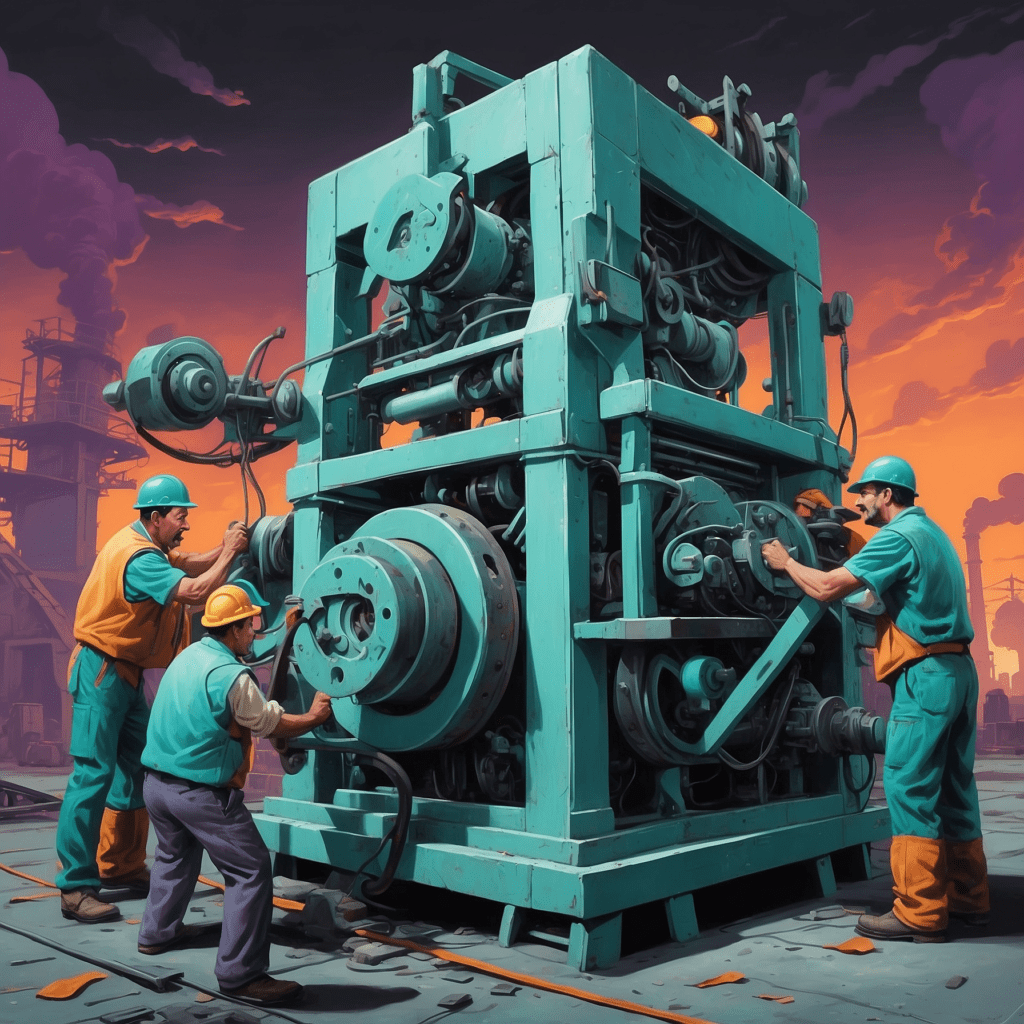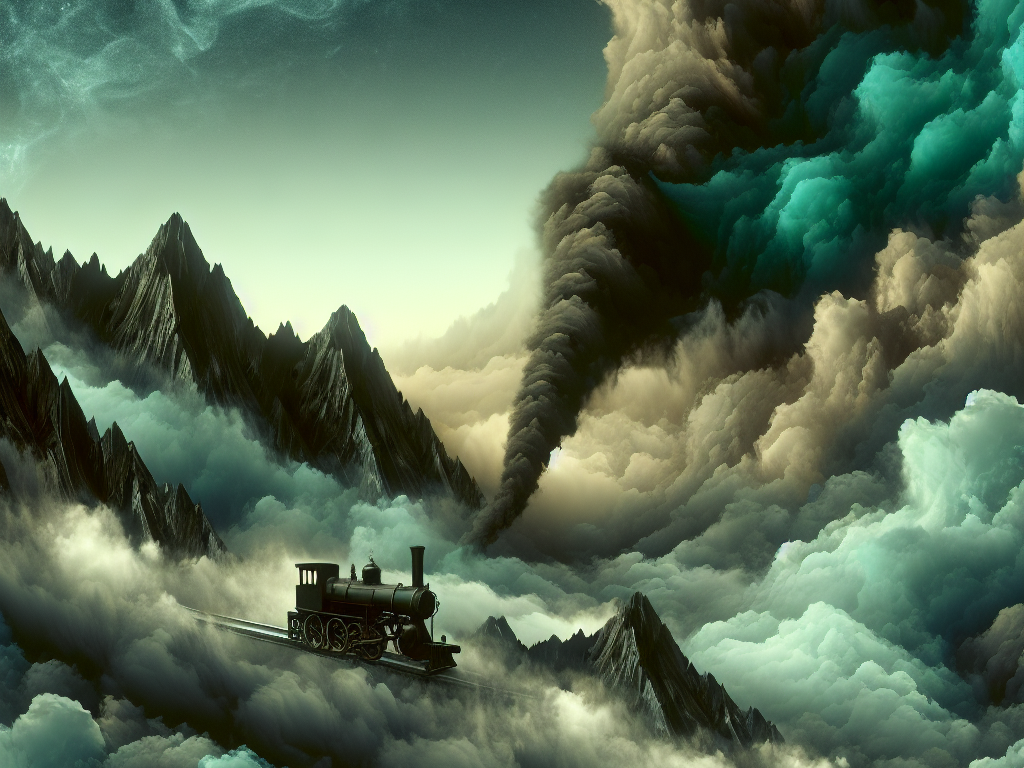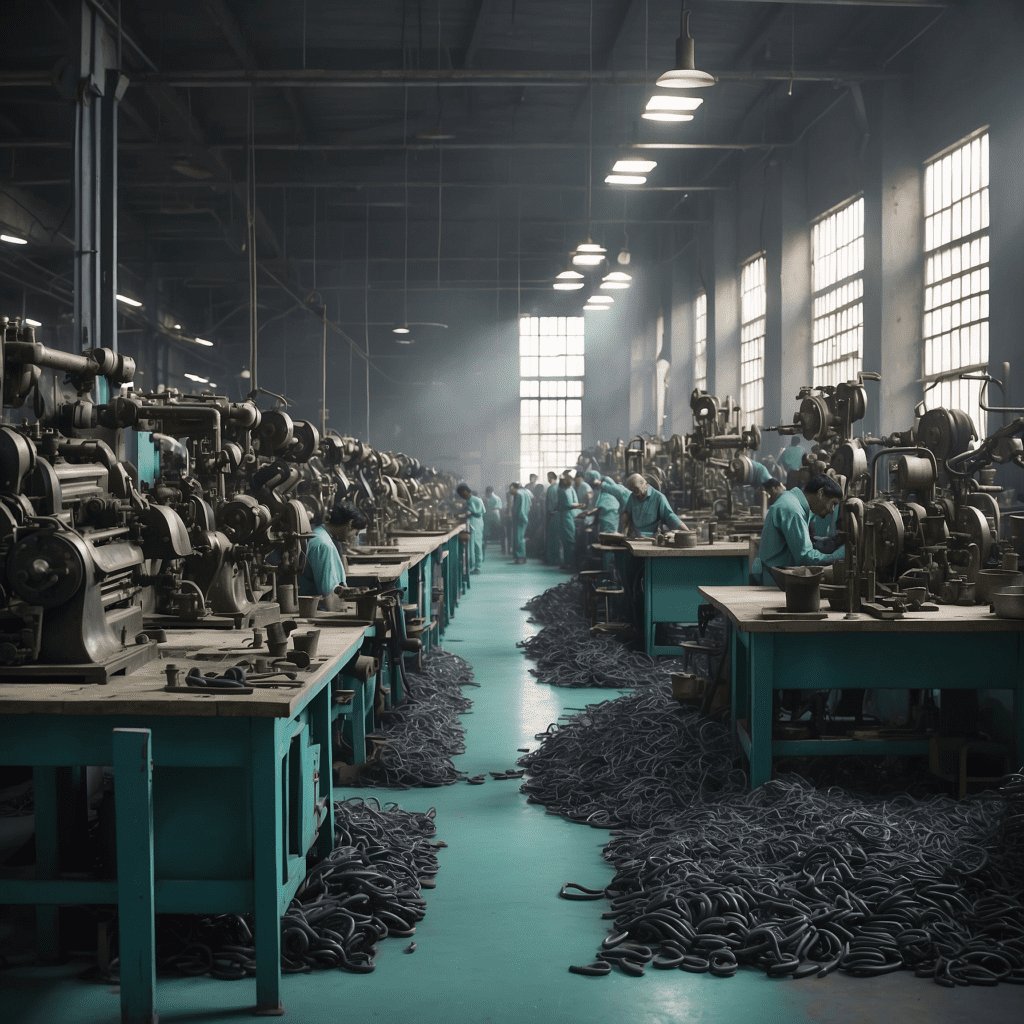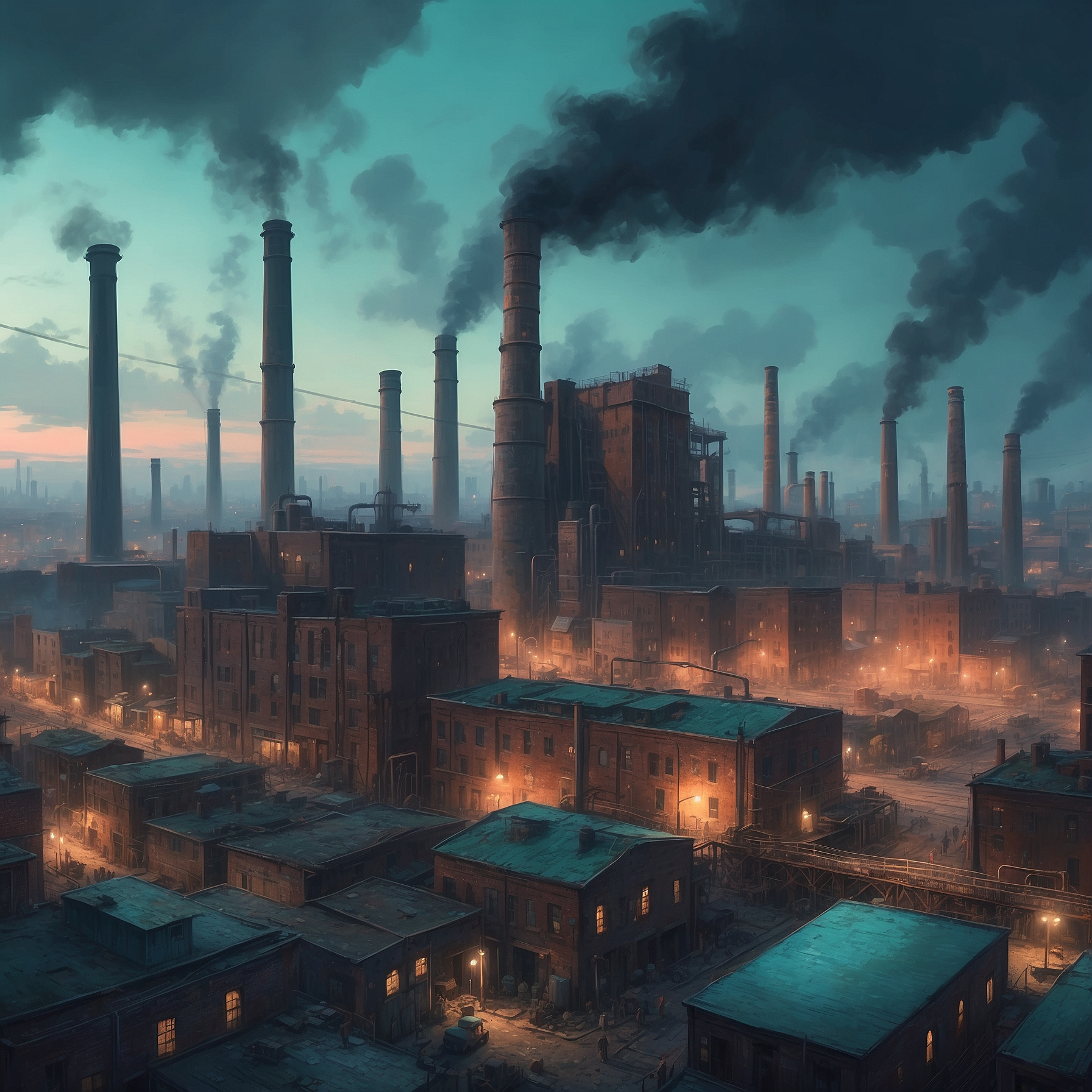Ah, the Industrial Revolution—a time when humanity decided to swap the plow for the piston. Imagine a world shifting from sleepy villages and handwritten letters to roaring factories and telegraphs zapping messages faster than gossip at a family reunion. The Industrial Revolution wasn’t just an upgrade; it was the original tech boom, complete with its own version of Silicon Valley—only with more coal and less kombucha.
But let’s get real: this massive shift wasn’t all sunshine and steam whistles. Sure, it made life easier in many ways, but it also came with soot-covered cities, child labor, and working hours that would make today’s overworked interns cringe. In this no-BS rundown, we’re diving into the nitty-gritty of how the Industrial Revolution reshaped society—for better and for worse. Buckle up; it’s going to be a wild ride through history’s original industrial rollercoaster.

Related: Crony Capitalism (Cronyism): When Business and Politics Get a Little Too Cozy
What is the Industrial Revolution?
The Industrial Revolution was a period of major innovation and mechanization that began during the mid-18th century in Great Britain and later spread throughout the world. It was the seismic shift from a handicraft and agrarian economy to one dominated by industry and machine manufacturing.
In Britain, the Industrial Revolution was all about coal and iron—the original power couple. Over in America, it was like they got the memo a bit later, focusing on manufacturing and rolling out new modes of transportation like steamships and, eventually, airplanes. Yep, the Americans dubbed it the Second Industrial Revolution, kicking off in the 1870s and cruising right through World War II. Talk about making up for lost time!
Before all this industrial hullabaloo, most folks were living the simple life—tilling the land in small, rural communities and maybe gossiping about whose turn it was to host the next barn dance. But then factories started sprouting up like weeds, and suddenly, everyone and their cousin was moving to urban areas to snag a job. Sure, the wages were low, and the working conditions were about as pleasant as a root canal, but hey, it beat relying on unpredictable weather to feed your family.
The steam engine, the superstar of inventions, dramatically chopped down the time it took to manufacture products. Imagine going from hand-sewing your clothes to having a machine churn out garments faster than you can say “Industrial Revolution.” More efficient production meant lower prices, which opened up shopping sprees to folks who previously couldn’t afford more than the basics. Forget Black Friday; this was the original consumer revolution!
Now, enter capitalism—the economic system that loves a good profit almost as much as we love memes. Business owners, aka capitalists, started organizing labor into factories and introduced a division of labor to boost output and, of course, profitability. Unlike the old craft and guild systems that moved at a snail’s pace, capitalist production was like strapping a rocket to innovation and technological change.
What were the effects of the Industrial Revolution?
Even though the Industrial Revolution occurred approximately 200 years ago, it left a profound impact on how businesses operate and how people live. It was during this era that factory systems developed, arguably responsible for creating capitalism and the modern cities we know today.
The main features of the Industrial Revolution were cultural, technological, and socioeconomic. Technological changes included:
- Use of new basic materials, mainly iron and steel.
- The introduction of new energy sources like coal, the steam engine, electricity, and petroleum.
- Invention of new machines, such as the spinning jenny and the power loom, which increased production with less human effort.
- The factory system, emphasizing division of labor and specialization.
- Advancements in communication and transportation—including the telegraph, radio, steam locomotive, steamship, automobile, and airplane.
- Increased application of science to industry.
These technological leaps led to a massive use of natural resources and the mass production of goods. But the revolution didn’t stop at industry—it spilled over into other areas like:
- Agriculture: Improvements that allowed food provision for a larger, non-agricultural population.
- Economics: A shift from land as a primary wealth source to rising industrial production, leading to a wider distribution of wealth and increased international trade.
- Politics: Changes reflecting shifts in economic power and new state policies suited to an industrialized society.
- Social structures: Growth of cities, development of working-class movements, and new patterns of authority.
- Cultural transformations: Workers developed new skills and shifted from being craftsmen to machine operators subject to factory discipline.
- Psychological changes: Increased confidence in the ability to harness resources and master nature.
No doubt, the Industrial Revolution brought both positive and negative effects. So, let’s dive deeper into how this era reshaped society—for better and for worse.
See also: Mercantilism vs Capitalism: Differences and Similarities
Effects of the Industrial Revolution in America and Great Britain
When the Industrial Revolution hopped across the pond to the United States in the 19th century, it didn’t just tiptoe in—it made a grand entrance worthy of a rock star. This period profoundly reshaped American culture and had a significant impact on global history. From politics to the economy, every aspect of American life was altered, like swapping out your old flip phone for the latest smartphone overnight.
By the late 1700s, the countryside was so last season. People couldn’t earn enough from farming and started flocking to towns and cities to work in factories. As cities ballooned in size, managerial hierarchies sprang up to keep the factory wheels turning. But let’s be honest—the cities weren’t exactly utopias. They were crowded, dirty, and about as hygienic as a middle-school locker room. Plus, with everyone abandoning farms for factory jobs, food production took a nosedive. Oops!
Machines cranked up production levels, making products cheaper to make and buy. Factory owners were rolling in dough, probably doing the 18th-century equivalent of popping bottles. But hold your applause—factory work was dangerous, and employees didn’t earn much. Men, women, and even kids as young as six were pulling 14 to 16-hour shifts, six days a week. Work-life balance? Never heard of it.

Positive Effects of the Industrial Revolution
- Increase in employment opportunities
- The Industrial Revolution inspired innovation
- Production levels increased
- Improved processes in virtually every sector
- Enhanced international trade
Now, let’s talk about the silver linings of all that industrial smoke.
Increase in Employment Opportunities
One of the biggest perks? Jobs galore! As factories sprouted up, they needed a workforce to keep those machines humming. Wages at factories were higher than what people earned mucking about on farms. More jobs meant more people could put food on the table—and maybe even splurge on that fancy hat they had their eye on.
Before this, your career options were limited to what your family did or some rare talent. With factories, the job market exploded, offering new ways for people to earn a living. It was like the gig economy of the 18th century—but with more soot and less flexibility.
The Industrial Revolution Inspired Innovation
This era was the original innovation hub. The surge of new ideas led to inventions we’re still using today—think the lightbulb, the sewing machine, the X-ray, calculators, and anesthesia. The Industrial Revolution didn’t just change industries; it revolutionized how we live our daily lives.
Imagine a world without lightbulbs or anesthesia. Yeah, no thanks. These innovations made life more comfortable and paved the way for future technological advancements. It’s like the Industrial Revolution handed us the keys to modern living.
Production Levels Increased
Mass production became the name of the game. Factories enabled groups of people to produce goods on a scale previously unimaginable. This not only made products more accessible but also improved their quality. People could finally afford items that were once considered luxuries.
Competition heated up as multiple businesses entered the market, offering consumers more choices. The free-market economy started to blossom, shifting power from producers to consumers. Talk about flipping the script!
Improved Processes in Virtually Every Sector
Transportation, construction, clothing, food production—you name it, it got an upgrade. The Industrial Revolution was like Oprah handing out improvements: “You get an upgrade! You get an upgrade! Everyone gets an upgrade!”
Cities took this opportunity to improve planning and infrastructure, especially as populations swelled. Roads were paved, buildings got sturdier, and life became generally more comfortable—unless you were stuck working in a factory, of course.
Enhanced International Trade
With better transportation methods, international trade took off. Goods could be shipped farther and faster than ever before. This global exchange allowed communities to enjoy products from all over the world, broadening horizons and boosting economies.
Think of it as the world’s first taste of globalization. International trade wasn’t just for spices and silks anymore; it was for everything under the sun.
Negative Effects of the Industrial Revolution
- Horrible living conditions for workers
- Stressful and unsatisfying lifestyles
- Child labor
- Discrimination against women
- Urban pollution
But hold on—it’s not all rainbows and steam engines. The Industrial Revolution had its fair share of dark clouds.
Horrible Living Conditions for Workers
Cities grew faster than a teenager in a growth spurt, but housing didn’t keep up. Workers were crammed into tiny, filthy spaces. In Liverpool, England, a survey found that a third of the population lived in cellars with no ventilation or sanitation. Up to 16 people sharing a single room? Talk about lack of personal space!

Sewage overflowed into streets, and clean water was a luxury. Diseases like cholera ran rampant. It’s no wonder life expectancy was alarmingly low. Workers faced health issues that made the gruesome conditions even more unbearable.
Stressful and Unsatisfying Lifestyles
Forget about job satisfaction. Workers endured long hours, minimal breaks, and relentless pressure to keep up with the machines. They moved from the autonomy of rural life to the rigid schedule of factory whistles and time clocks.
Imagine doing the same repetitive task for 16 hours a day in hazardous conditions. Injuries were common, and there was little to no compensation. It was a grind in the worst sense of the word.
Child Labor
One of the most heart-wrenching negative effects was the exploitation of child labor. Orphans and poor children were scooped up to work in factories under horrendous conditions. They worked long hours for meager pay and were deprived of education.
It’s a bleak chapter in history that exposed the dark side of rapid industrialization. The fight against child labor would become a significant social movement in the years to come.
Discrimination Against Women
Women were paid half of what men earned for the same work—if not less. Employers assumed women didn’t need to support a family, so they could get away with lower wages. This institutionalized gender inequality in the workplace.
Even when office work became available, women were pigeonholed into certain roles, reinforcing gender stereotypes. Breaking out of these roles was nearly impossible, locking women into a cycle of limited opportunities.
Urban Pollution
Coal-powered factories belched smoke into the air, turning skies gray and lungs black. Pollution was rampant, affecting not just the environment but also public health.
Sewage and industrial waste contaminated rivers, making water unsafe to drink. The lack of environmental regulations meant that natural resources were exploited without consideration for sustainability. Sound familiar?
See also: Laissez-Faire Capitalism: Definition and Examples
Socioeconomic and Political Impacts of the Industrial Revolution
- Political effects
- Economic impacts
- Social effects
Political Effects of the Industrial Revolution
The Industrial Revolution catapulted the United States into a global economic powerhouse. It led to labor-related legislation and a clash between traditional culture and modern progress.
The Civil War can be seen as a conflict between an industrial society with paid employees and an agrarian one relying on slave labor. The expansion of the U.S. economy influenced international relations and spurred territorial growth.
Urban workers became a vocal political force, pushing for laws like the 1938 Fair Labor Standards Act. In short, the Industrial Revolution didn’t just change how we worked; it changed how we governed.
Read also: What is Mercantilism? Examples and Theory
Economic Effects of the Industrial Revolution
This era marked the rise of capitalism, an economic system theorized by Adam Smith and critiqued by Karl Marx. Factories illustrated the capitalist principle of wage labor, concentrating wealth in the hands of industrialists and tying riches to consumer market fluctuations.
Capitalist America, rich in natural resources and population, became an economic juggernaut. It took advantage of vast internal and international markets, setting the stage for the consumer-driven economies we have today.
Check out: Capitalism Characteristics and Features
Social Effects of the Industrial Revolution
The most visible social effect was rapid urbanization. People moved to cities en masse, seeking factory jobs. This led to overcrowded cities with inadequate housing and sanitation.
New social classes emerged—the middle class and the working class. The middle class enjoyed comfortable living conditions, while the working class struggled in slums with poor sanitation and health hazards.
This stark contrast laid the groundwork for social tensions that would fuel labor movements and calls for reform. The Industrial Revolution didn’t just build factories; it also built societal divides.
See also: Mercantilism vs Communism: Differences and Similarities
Takeaways
The Industrial Revolution was a colossal shift from manual labor and traditional agriculture to factory-based manufacturing powered by machinery and new energy sources. It was the catalyst for the modern economy and urban society.
While it brought about significant advancements and improved living standards for some, it also introduced severe social and environmental issues. Labor reforms and unions eventually emerged to address some of these problems, but the era leaves a legacy that’s both celebrated and critiqued.
In the end, the Industrial Revolution widened horizons and increased opportunities, but it also served as a cautionary tale about unchecked progress. It’s a reminder that innovation should go hand-in-hand with ethical considerations—a lesson as relevant today as it was over 200 years ago.
